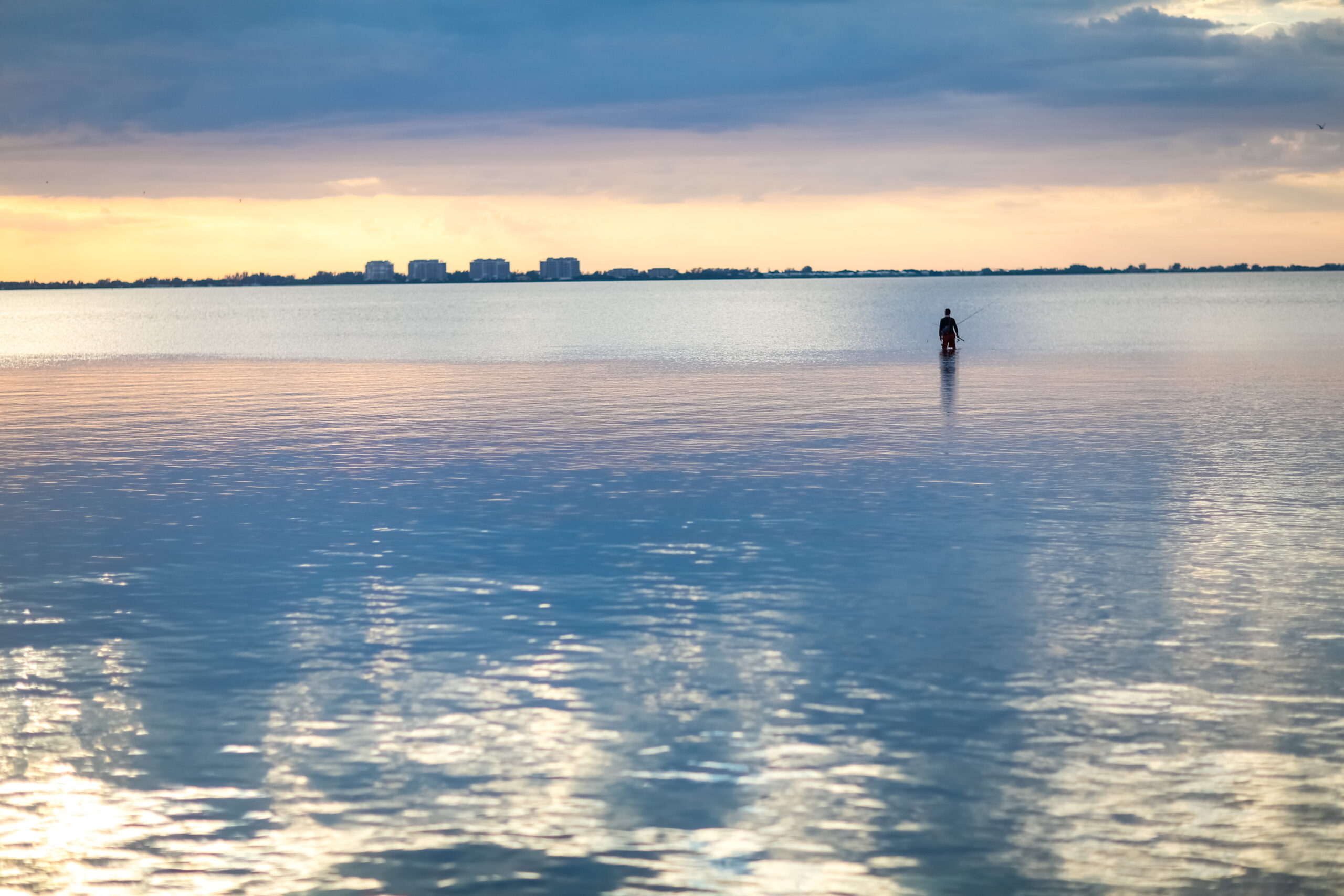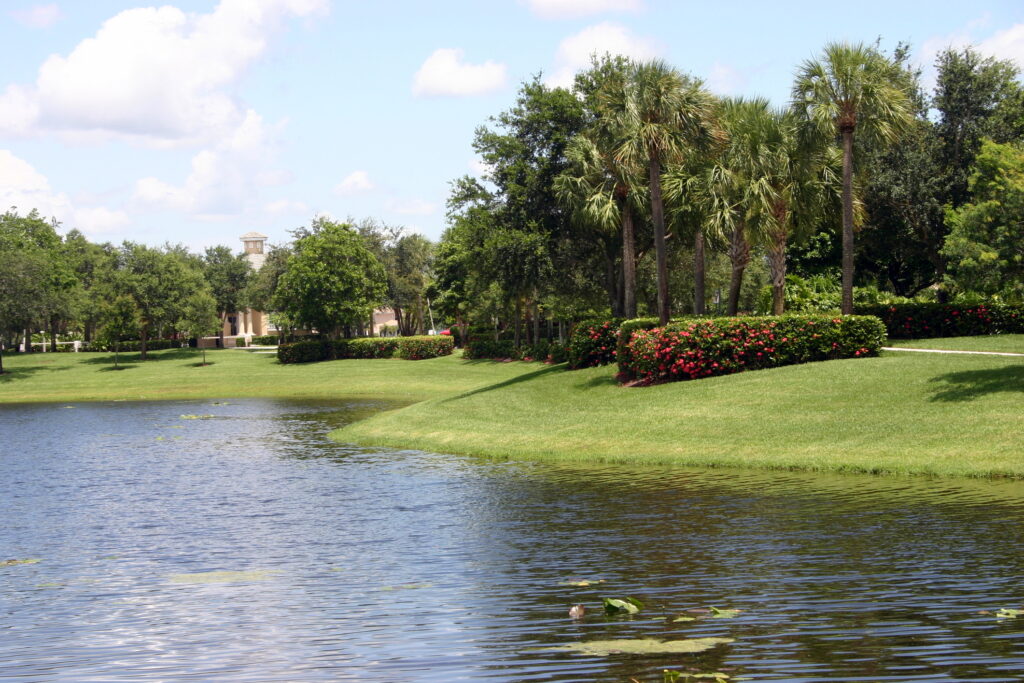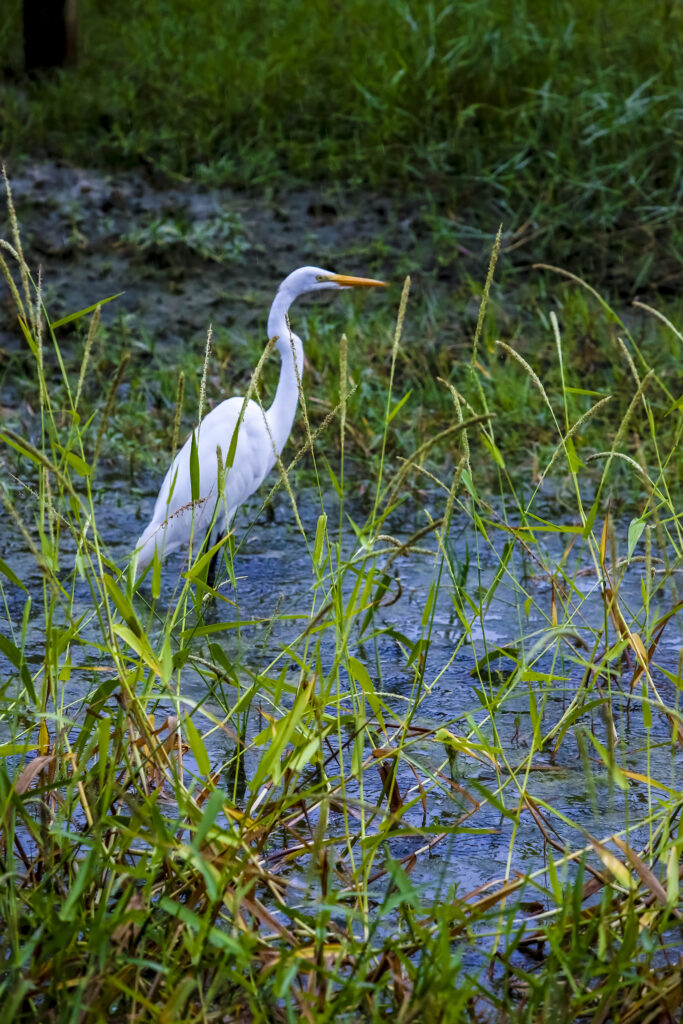
Feature
Water Wellness: Gulf Coast Community Foundation’s Community Playbook for Healthy Waterways
By Christy Pessemier | January 2023
If you lived in the Sarasota-Bradenton area from 2017 to 2019, you probably remember the persistent and massive red tide bloom that hit Florida coastal waters. It was one of the worst residents had seen in many years, and it came at a high price tag—not only by pummeling an entire ecosystem with toxins resulting in massive amounts of dead sea life, but also wreaking havoc on the tourism and fishing industries and water-related industries.
Though it’s hard to fathom, there were positive aspects to the devastation—the community became much more aware of how important the water quality in our region is, while learning how they could contribute to healthier waters. Gulf Coast Community Foundation has been a big part of that effort.
“The silver lining of that cloud is that the public went through a very steep and effective learning curve on water pollution where nutrients became a household word,” Jennifer Shafer, PhD and Co-Executive Director of the Science and Environment Council of Southwest Florida said. “People were very tuned in to what could be causing the especially bad case of red tide. It was a great opportunity to redouble our efforts in community education.”
Despite the positive aspects, Jon Thaxton, Senior Vice President for Community Leadership for Gulf Coast Community Foundation knew intentional, urgent action needed to be taken.
“When we had that multi-year red tide outbreak, Gulf Coast Community Foundation said something has to be done. We can’t sit by and have this happen over and over again,’” he said.

Though the non-profit makes an impact on our region with a variety of key initiatives, their focal point for environmental work is the Community Playbook for Healthy Waterways —a water quality playbook that includes partnerships, activities, and public engagement. Gulf Coast Community Foundation is celebrating the instrumental guiding document’s two-year anniversary.
Thaxton got the idea of the playbook from Dr. David Shafer, Jennifer’s husband, and the Co-Executive Director of the Science and Environment Council.
Two years ago, in response to the red tide bloom—Thaxton took Dr. Shafer’s idea and went to the board of Gulf Coast Community Foundation, suggesting they put together the playbook, assemble top regional experts—and ask a vital question:
“In a perfect world, if we wanted to reduce these anthropogenic pollutants that were getting into the waterway and fueling the red tide, how would we do that?”
The Gulf Coast board was in support of the playbook idea and plan, and that’s when the Shafers and Steve Suau were hired by Gulf Coast. The Shafers own a local environmental consulting firm that provides strategic planning and communication support for conveying science and science policy to both the public and decision makers in the community. Mr. Suau is a stormwater engineer and known for his innovative approaches to water quality improvement.
As far as how the foundation was able to find consultants with the expertise and experience the Shafers and Suau have, Thaxton says it wasn’t hard. He describes the Sarasota-Bradenton community as a “very small world for those of us in this geeky kind of science-based work.” As a former county commissioner, Thaxton used to sit on policy boards and was associated with the Charlotte Harbor National Estuary Program (CHNEP) and Sarasota Bay Estuary Program (SBEP) since both of their inception. He was also on another board for Tampa Bay. The Shafers did work for these programs as well, so their environmental consulting work was already familiar to him. And with Suau’s creative work designing the Celery Fields, it was only natural to get them involved with Gulf Coast.
Today, Thaxton, Suau, and Shafer are continuing to take bold steps to increase education and improve water quality in the Sarasota-Bradenton area, along with the community and policymakers. One example, as a result of this approach, is that a new section was added in the playbook to reflect this.
“The playbook was designed around three goals of reducing and removing nutrient pollution from our local soils and waterways, and then sustaining those gains through building community capacity,” Shafer explained. “We added progress reporting to it because, in the last two years, the community really rallied around many fronts—business, non-profit, government, and has begun implementing many of the activities they told us they wanted to do, and should be done.”
One of the key decisions Gulf Coast and Thaxton made at the outset was who their target audience was going to be.
“We were not going to target the everyday citizen,” he said. “Our target audience was going to be policymakers, the permit review regulators, the people who actually write and enforce the water quality policies.”
At the time, Thaxton said it was viewed as a bold and high-risk move, because it was so atypical, and not the course most people take. Reflecting back on it today, he says it was exactly what they needed to do.
“It was clearly the best approach,” he said. “We have absolutely no regret. We get to play in the big leagues, and we’re in the factory itself, working together with the people who are enforcing these water quality projects.”
According to Thaxton, working with policymakers on stormwater quality rather than a quantity perspective has been a big step. Through specific modifications, not only can flooding be prevented, but water quality can be improved at the same time. That way, when the water reaches our creeks, bays, estuaries, and ultimately the Gulf of Mexico, it’s cleaner because it’s been filtered through various natural processes.
Gulf Coast and community partners have also been working with homeowners associations on maintenance of their stormwater ponds, and Thaxton recently testified to the Sarasota County Commission about the importance of having sewer lines inspected that go from a person’s home to the utility line hookup.
“When these sewer lines leak and that water starts getting into the stormwater system and into our waterways, we need to have a way of detecting it, so it can be corrected,” Thaxton said. The problem they run into when it comes to the nuts and bolts of human activities and how they impact waterways is “when you’re talking about sewer lines, and sewer treatment, it’s not very fancy and sexy.”

Still, they’ve covered a lot of ground through using the playbook in the community. In partnership with START (Solutions To Avoid Red Tide), some of the important work they’re doing is going into residential subdivisions and attending their annual community meetings, sharing the potential cost savings residents can have through a more natural form of maintaining their stormwater lakes, as opposed to chemicals and mowing. They show them not only how to improve water in the bay, but how they can have a healthier pond behind their homes and save money on pond maintenance. The money savings appeal is where it gets a little sexier for homeowners associations. People like the idea of combining cost savings with cleaner waterways.
Many years ago, this region had a natural system for keeping water clean. Thaxton and Shafer hope to bring back some of those biological approaches with the work they’re doing.
Thaxton’s family goes back to this region as far as the early 1900s, before the area was developed and there was already a built-in system for routing clean water to the bay.
“In my great-grandfather’s era, there were nothing but pine forests and herbaceous wetlands,” he said. “Those are now all gone and so are the systems that kept Sarasota Bay clean and healthy. We obliterated them and covered them with shopping centers and fertilizer rich lawns. Our playbook is designed to understand what natural filtration activities need to happen so we can restore as best as possible those natural, healthy systems that were in this bay 150 years ago.”
Together, working in partnership with many other local organizations in the Sarasota-Bradenton area, they are getting the word out in a variety of ways.
“We are a fairly small community, and we’re pretty dialed in,” Shafer said. “David and I sit at the center of this network of 40 environmental-based organizations, the Science and Environment Council, with an ear to the ground of what’s happening.”
Shafer points out that Sarasota County itself places a high priority on water quality and hosts an annual public water quality update meeting to report all the things they’re working on, relative to water quality. Since they began facilitating the playbook in the community, and thanks to a supportive Sarasota County Commission, the Sarasota County Administration has invited the Shafers to host meetings twice a year, bringing together division managers and finding out where gaps are in their activation of the playbook.
Though Thaxton describes their work with the water quality playbook as a “game of patience” that takes time and doesn’t involve immediate gratification—he sees the difference it’s making.
“It’s working. We’re actually sitting down at the table with top administrators of Sarasota County that deal with water quality, we’re making suggestions, asking questions, and asking how we can help.”
Shafer is thankful she was brought on as a part of the project. She enjoys the strategic planning with non-profit partners and says the collaborative focus on water quality solutions has been refreshing and inspiring. But there’s still lots more to do.
“Looking to the future, we’re expecting to continue to see rapid growth of this area, and an increase in the intensity of storms and hurricanes,” Shafer said. “Everything we’re doing now to build resilience into our natural and built environments is an insurance policy for the future.”
Not only do Shafer and Thaxton have the support of the community, but they know what they’re doing is important, whether or not they get the results they’re aiming for.
“The worst thing that can happen from our work with the Water Quality Playbook is that our waterways are going to be cleaner and healthier,” Thaxton said. “But a lot of other really cool things could happen, such as reducing beach closures, edible seafood, and fewer and less intense red tide outbreaks. Whatever the outcome, some of us are motivated by just doing the right thing.”
To learn more about the Water Quality Playbook, go to waterqualityplaybook.org.
Additional Resources:
State of the Bay Report Card from Sarasota Bay Estuary Program



You must be logged in to post a comment Login